Out of 67 spring-calving suckler cows put to the bull on Declan Rafferty’s farm outside Pomeroy in Co Tyrone, scanning at the end of August has shown that only one is not in-calf.
Achieving that level of performance requires attention to detail, but ultimately is necessary if sucklers are to generate positive margins on local farms. Cows that slip in calving date every year add cost to the farm business.
Declan, who farms in partnership with his brother-in-law Aidan Quinn, runs a herd of around 100 suckler cows, with 70% calving in the spring and the remaining 30% in the autumn.
All male calves are finished as bulls, with heifers not suitable for breeding also taken through to finish. In recent years, Declan has added a heifer rearing enterprise and also buys in some dairy-bred calves for finishing, so the farm is quite heavily stocked at around 2.4 livestock units per hectare.
In total, the farm extends to 69ha, of which around 56ha is improved grassland. To carry all the stock, grassland management is key. The farm typically grows around 11t of grass dry matter per hectare (DM/ha), despite running to 700ft above sea level.
Fields are split into paddocks averaging 0.6ha to 1ha in size, with the aim to graze each paddock for three days in a 21-day rotation. Grass is measured weekly, with data entered onto AgriNet.
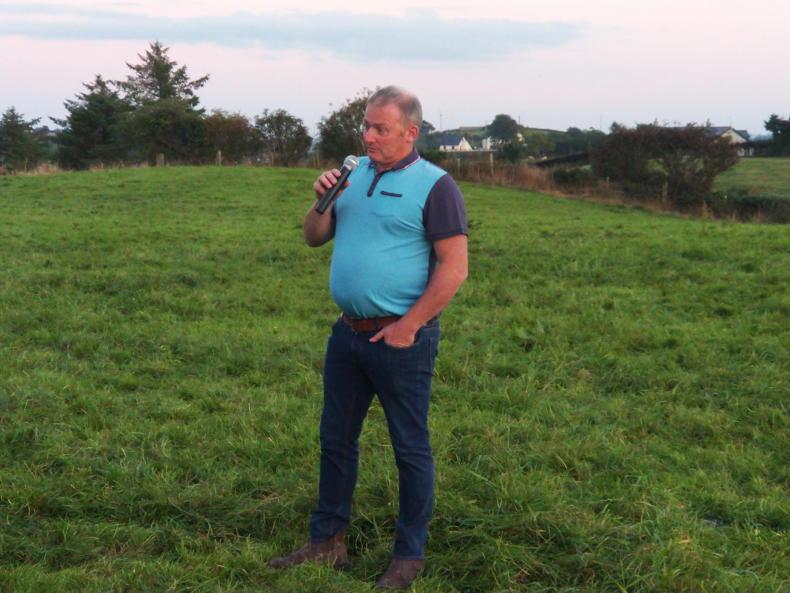
Declan Rafferty hosted the Ulster Grassland Society summer beef meeting on his farm outside Pomeroy, Co Tyrone.
Ensuring cows are eating good quality grass all summer is a crucial factor in the excellent fertility on the farm. However, Declan has also had to address other issues relating to mineral deficiencies.
Blood samples previously showed high molybdenum levels, which was locking up copper and having a negative impact on cow fertility.
All cows now receive two Coselcure boluses at turnout. They are also vaccinated annually for leptospirosis and BVD.
The remaining factor that will help drive fertility is not to carry passengers, which means you are only breeding from fertile cows.
“It is a fairly young herd of cows. If the cow is still doing the job, she gets to stay, but older cows tend to get sore on their feet. No cows are allowed to slip between groups,” said Declan.
Breed mix
Having mainly worked with a herd of Simmental x Limousin, Declan has added Stabiliser to the mix, mainly in an attempt to bring overall cow size down. He describes his Stabiliser cows as “fertile, friendly and easy managed.” The resulting male calves are best suited to finishing as bulls.
As well as cow size, the other issue Declan has tried to address is milking ability.
A few dairy-bred heifers, bought as calves, have been kept on as cows and now have daughters in the herd. He also has some Shorthorn x Fleckvieh cows sourced as heifers from a neighbouring dairy farm.
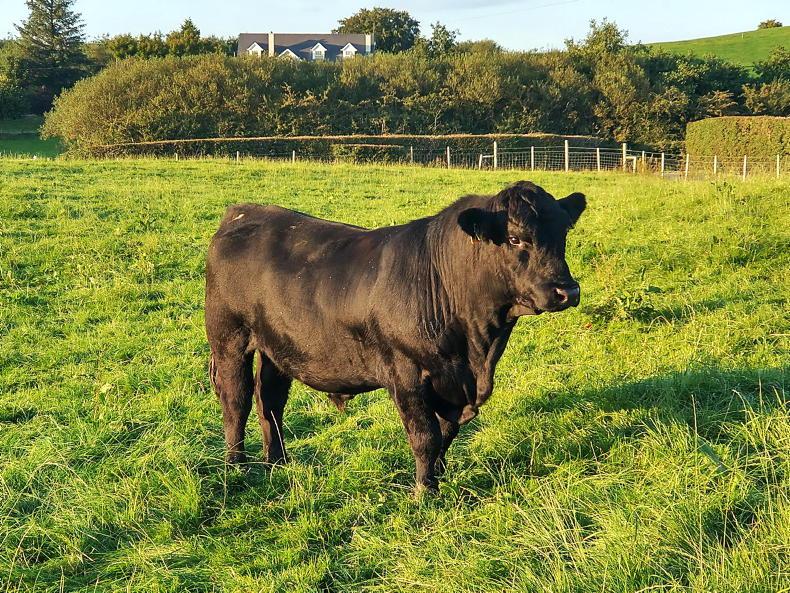
This young Stabiliser bull has completed his first season on the farm.
The first cross dairy-bred cows are not difficult to spot and tend to carry less flesh. “I haven’t had any problem getting them in-calf so far, but no doubt, the second cross are a much better cow. They stick the conditions, but at the same time, their milk drives calf weight up,” said Declan.
In the past, Declan has had some issues at turnout in the spring with pneumonia in young calves. All calves now get two shots of Bovipast pre-turnout and a third pre-housing dose in the autumn.
He is also wary of the threat of grass staggers, especially given that his land is well stocked, with slurry applied to paddocks, meaning potassium rates are fairly high.
“There is never a day without a magnesium bucket – all the time, all groups,” said Declan.
Autumn calving herd drives up output
The autumn cows on the farm generally start calving from 1 August, with calving complete by mid-September.
The herd suits the farm and has helped to drive up output. In the spring, calves are allowed to creep outside, which helps break the bond with the cow. “The calves are gradually allowed out and eventually I just close the door,” said Declan.
The cows remain inside on a restricted silage diet until the first cut is harvested. Bull calves are re-housed by mid-summer and finished towards the end of the year.
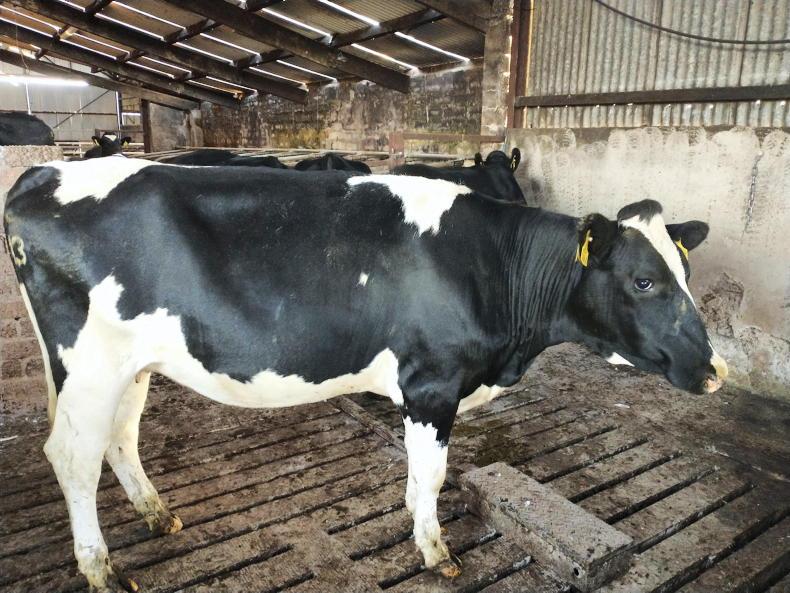
Dairy heifers return to their owner at the point of calving.
They are currently eating surplus grass baled off paddocks, along with 4kg per head of concentrate and will be gradually transitioned over onto an ad-lib diet for a quick finishing period.
Declan accepts that the autumn herd generally comes with higher costs, mainly because there is more meal fed per head, but points out that it does mean cash flow is spread throughout the year.
“I don’t think there is much difference in the economics. When the autumn-calving cows are inside they are easy managed,” he said.
To help prevent summer mastitis, all the autumn cows have fly repellent tags applied to their ears.
Dairy heifers
The dairy heifer rearing enterprise on the farm also spreads cashflow through the year. The heifers are autumn-calving, so they arrive at one year old and leave at the point of calving 12 months later.
Investment in grass has paid off
Over the last 10 years, Declan has invested in grazing infrastructure, splitting fields into paddocks using both permanent and temporary electric fences and installing new drinkers and multiple access points. He simply could not keep the stock he has at grass without some form of rotational grazing system.
One of the benefits of grass measuring is that it allows Declan to identify fields that are under-performing, with these areas then ear-marked for reseeding.
Declan has used clover mixes in the past, but given that he has a relatively intensive grazing system, he has struggled to control docks without wiping out the clover. However, high fertiliser prices this year have forced a re-think.
“I have planted 5ac of red clover and 4ac of a white clover sward in the last few weeks. I might do more in the future, but I fear it will get overrun with docks,” he said.
He has looked at multi-species swards, but has no intention of going down that route at present.
Looking ahead to 2023, Declan has recently bought forward around half his fertiliser requirements for the year. “The reality is, we can’t grow grass up here without the fertiliser,” he said.
Aim to make top-quality silage
With their own silage equipment available, Declan and Aidan are usually able to make top-quality first-cut silage every year, with silage ME often approaching 12MJ/kg DM.
However, while some grass was harvested in mid-May, a break in the weather meant the remainder was not cut until the end of the month.
As a result, silage quality is down on previous years, with this later cut material coming in with a ME of 11.2MJ/kg DM.
Dribble bar
The farm also has its own slurry spreading equipment and has invested in a pipe system and dribble bar. While most of the slurry is targeted at silage fields, grazing paddocks also normally receive a couple of dressings throughout the year.
“When we used the splash plate on paddocks, it was difficult to get good clean outs. The dribble bar does a much better job, but you need the slurry to be thin,” said Declan.
In total during 2022, grazing ground has received 66kg of N/ha, down from 86kg in 2021. Declan has been a participant in the AgriSearch GrassCheck programme for the last five years and is currently part of the CAFRE Technology Demonstration Farm project.
Read more
Irish Angus beef sells for €72/kg in Singapore
Five jobs to get cattle sheds ready for autumn housing
Out of 67 spring-calving suckler cows put to the bull on Declan Rafferty’s farm outside Pomeroy in Co Tyrone, scanning at the end of August has shown that only one is not in-calf.
Achieving that level of performance requires attention to detail, but ultimately is necessary if sucklers are to generate positive margins on local farms. Cows that slip in calving date every year add cost to the farm business.
Declan, who farms in partnership with his brother-in-law Aidan Quinn, runs a herd of around 100 suckler cows, with 70% calving in the spring and the remaining 30% in the autumn.
All male calves are finished as bulls, with heifers not suitable for breeding also taken through to finish. In recent years, Declan has added a heifer rearing enterprise and also buys in some dairy-bred calves for finishing, so the farm is quite heavily stocked at around 2.4 livestock units per hectare.
In total, the farm extends to 69ha, of which around 56ha is improved grassland. To carry all the stock, grassland management is key. The farm typically grows around 11t of grass dry matter per hectare (DM/ha), despite running to 700ft above sea level.
Fields are split into paddocks averaging 0.6ha to 1ha in size, with the aim to graze each paddock for three days in a 21-day rotation. Grass is measured weekly, with data entered onto AgriNet.

Declan Rafferty hosted the Ulster Grassland Society summer beef meeting on his farm outside Pomeroy, Co Tyrone.
Ensuring cows are eating good quality grass all summer is a crucial factor in the excellent fertility on the farm. However, Declan has also had to address other issues relating to mineral deficiencies.
Blood samples previously showed high molybdenum levels, which was locking up copper and having a negative impact on cow fertility.
All cows now receive two Coselcure boluses at turnout. They are also vaccinated annually for leptospirosis and BVD.
The remaining factor that will help drive fertility is not to carry passengers, which means you are only breeding from fertile cows.
“It is a fairly young herd of cows. If the cow is still doing the job, she gets to stay, but older cows tend to get sore on their feet. No cows are allowed to slip between groups,” said Declan.
Breed mix
Having mainly worked with a herd of Simmental x Limousin, Declan has added Stabiliser to the mix, mainly in an attempt to bring overall cow size down. He describes his Stabiliser cows as “fertile, friendly and easy managed.” The resulting male calves are best suited to finishing as bulls.
As well as cow size, the other issue Declan has tried to address is milking ability.
A few dairy-bred heifers, bought as calves, have been kept on as cows and now have daughters in the herd. He also has some Shorthorn x Fleckvieh cows sourced as heifers from a neighbouring dairy farm.

This young Stabiliser bull has completed his first season on the farm.
The first cross dairy-bred cows are not difficult to spot and tend to carry less flesh. “I haven’t had any problem getting them in-calf so far, but no doubt, the second cross are a much better cow. They stick the conditions, but at the same time, their milk drives calf weight up,” said Declan.
In the past, Declan has had some issues at turnout in the spring with pneumonia in young calves. All calves now get two shots of Bovipast pre-turnout and a third pre-housing dose in the autumn.
He is also wary of the threat of grass staggers, especially given that his land is well stocked, with slurry applied to paddocks, meaning potassium rates are fairly high.
“There is never a day without a magnesium bucket – all the time, all groups,” said Declan.
Autumn calving herd drives up output
The autumn cows on the farm generally start calving from 1 August, with calving complete by mid-September.
The herd suits the farm and has helped to drive up output. In the spring, calves are allowed to creep outside, which helps break the bond with the cow. “The calves are gradually allowed out and eventually I just close the door,” said Declan.
The cows remain inside on a restricted silage diet until the first cut is harvested. Bull calves are re-housed by mid-summer and finished towards the end of the year.

Dairy heifers return to their owner at the point of calving.
They are currently eating surplus grass baled off paddocks, along with 4kg per head of concentrate and will be gradually transitioned over onto an ad-lib diet for a quick finishing period.
Declan accepts that the autumn herd generally comes with higher costs, mainly because there is more meal fed per head, but points out that it does mean cash flow is spread throughout the year.
“I don’t think there is much difference in the economics. When the autumn-calving cows are inside they are easy managed,” he said.
To help prevent summer mastitis, all the autumn cows have fly repellent tags applied to their ears.
Dairy heifers
The dairy heifer rearing enterprise on the farm also spreads cashflow through the year. The heifers are autumn-calving, so they arrive at one year old and leave at the point of calving 12 months later.
Investment in grass has paid off
Over the last 10 years, Declan has invested in grazing infrastructure, splitting fields into paddocks using both permanent and temporary electric fences and installing new drinkers and multiple access points. He simply could not keep the stock he has at grass without some form of rotational grazing system.
One of the benefits of grass measuring is that it allows Declan to identify fields that are under-performing, with these areas then ear-marked for reseeding.
Declan has used clover mixes in the past, but given that he has a relatively intensive grazing system, he has struggled to control docks without wiping out the clover. However, high fertiliser prices this year have forced a re-think.
“I have planted 5ac of red clover and 4ac of a white clover sward in the last few weeks. I might do more in the future, but I fear it will get overrun with docks,” he said.
He has looked at multi-species swards, but has no intention of going down that route at present.
Looking ahead to 2023, Declan has recently bought forward around half his fertiliser requirements for the year. “The reality is, we can’t grow grass up here without the fertiliser,” he said.
Aim to make top-quality silage
With their own silage equipment available, Declan and Aidan are usually able to make top-quality first-cut silage every year, with silage ME often approaching 12MJ/kg DM.
However, while some grass was harvested in mid-May, a break in the weather meant the remainder was not cut until the end of the month.
As a result, silage quality is down on previous years, with this later cut material coming in with a ME of 11.2MJ/kg DM.
Dribble bar
The farm also has its own slurry spreading equipment and has invested in a pipe system and dribble bar. While most of the slurry is targeted at silage fields, grazing paddocks also normally receive a couple of dressings throughout the year.
“When we used the splash plate on paddocks, it was difficult to get good clean outs. The dribble bar does a much better job, but you need the slurry to be thin,” said Declan.
In total during 2022, grazing ground has received 66kg of N/ha, down from 86kg in 2021. Declan has been a participant in the AgriSearch GrassCheck programme for the last five years and is currently part of the CAFRE Technology Demonstration Farm project.
Read more
Irish Angus beef sells for €72/kg in Singapore
Five jobs to get cattle sheds ready for autumn housing








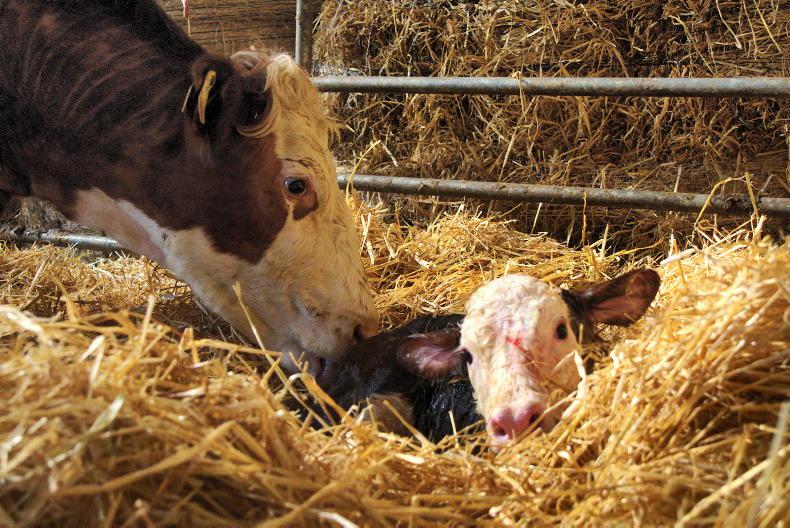

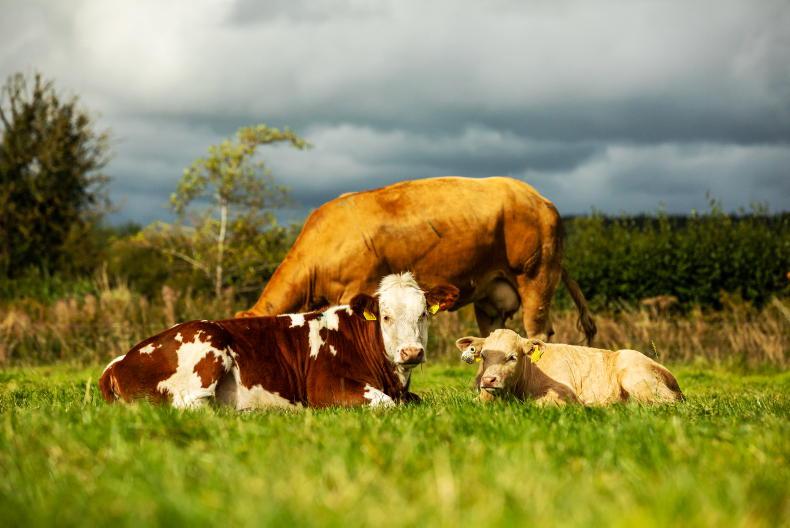
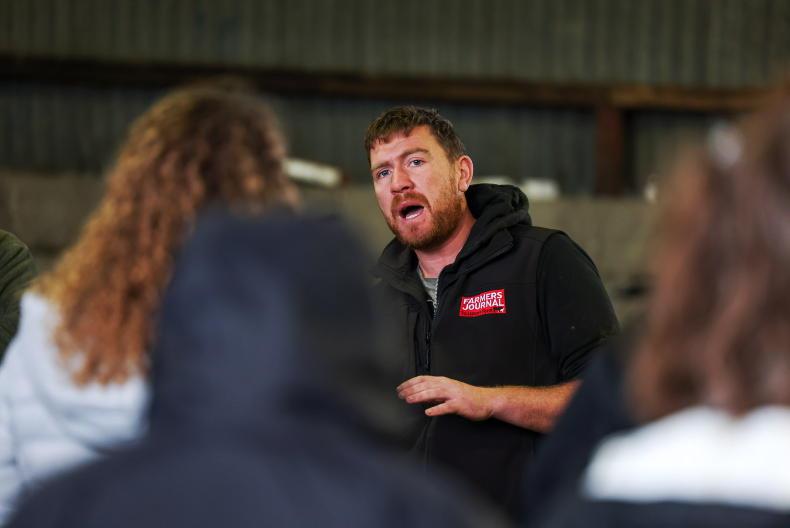

SHARING OPTIONS